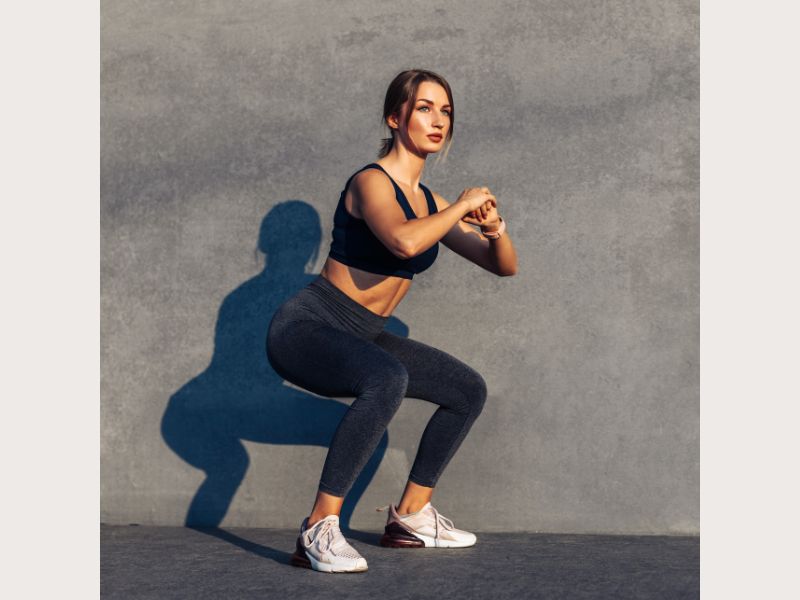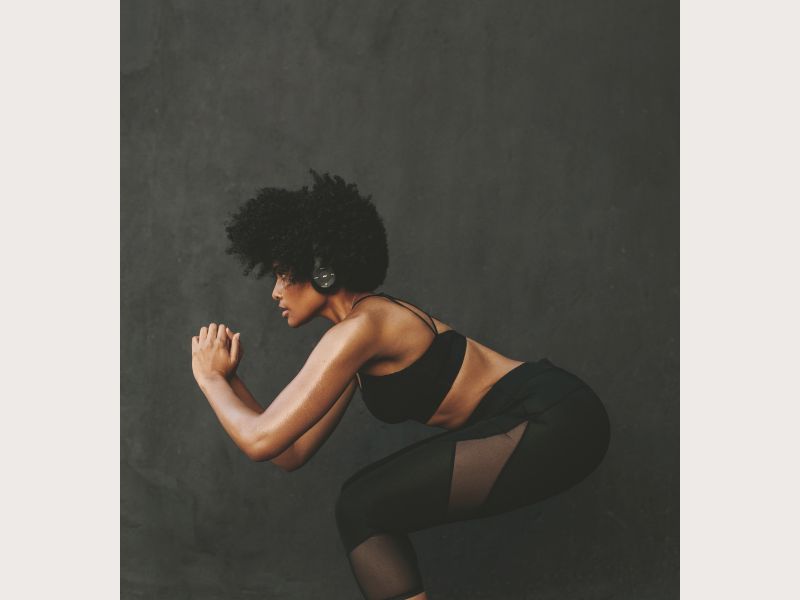With almost any workout video you see on YouTube or TikTok, it seems like the workout always involves some sort of squat exercise. Love them or hate them, squats are an excellent way to strengthen your legs, glutes, and core. But if you’re not doing them with proper form and knowing where your body weight should be placed while in action— you could be wasting your time and possibly cause an injury.
When it comes to functional strength training exercises like squats, I think it’s so important to spend time with clients on beginner squats to ensure proper form and bodyweight placement. It’s essential to create a solid foundation for the best body-shaping results that will help them graduate to more challenging squat exercises, like the goblet squat.
In this article I will cover the basic squat exercises, from beginner to more intense strength building squats. So, let’s start with the basics first…what is a squat exercise?
What is a Basic Squat Exercise?
The basic bodyweight squat is a pretty straightforward and simple movement. You lower your bottom, as if you’re about to sit down on a chair, by bending your knees to a comfortable depth and push yourself up to the starting standing position and repeat.
The Do’s and Don’ts for Squat Exercises
The key to doing a proper squat is your beginning stance, engaging your core muscles and knowing where to place your bodyweight.

Here are a few key points:
DO: Stand up straight with your feet hip-width apart.
DO: Engage your abdominal muscles throughout the exercise.
DO: Inhale as you lower your body down and exhale as you rise up.
DON’T: Let your knees lean forward, past your toes (this can cause an injury)
DON’T: Use the knees to lift up. Use your hips.
DON’T: Lift your heels, they should be glued to the ground to help place the emphasis on working the glutes.
How Many Squats Should I Do Every Day?
Everyone has a fitness goal, whether its to lose weight, get stronger, or just improving your day-to-day functionality by getting active. So the number a squats that you include in your workouts will depend on the results you’re hoping to create. However, if you’re just starting out your fitness journey 3 sets at 10-15 reps is a good place to start and try starting with beginner basic squats and make it your next goal to do more challenging squats like a Bulgarian.Muscles Worked and Benefits with Squat Exercises
The basic bodyweight squat targets the following lower body muscles:
Quadriceps (front of the thigh)
Hamstrings (back of the thigh)
Glutes (muscles in your buttocks)
Abdominal muscles

Although the basic squat looks like it’s only for the lower body, it’s also considered a compound movement because the initiation of the abdominal muscles by engaging the core.
Squat Exercise Benefits
Leg muscle definition
Strengthens hip flexors
Supports better balance and stability
Beginners: Squat to Bench
I always like to start with my new clients with a squat to bench exercise, just so I can observe their stance and form. This exercise is a great squat exercise for beginners to help build their strength and confidence for more intense and challenging squats.
Step-By-Step Guide: Bodyweight Squat to Bench
Standing in front of the bench or chair, make sure it's close enough so you can sit down on it.
Place your feet hip-width apart standing straight with your shoulders rolled back and down and tighten your core. Lift your arm straight forward.
3. Lower your bottom as if you’re sitting down on the bench.
4. Let your butt tap the bench and hold for 1-2 seconds, then push up by driving through your heels to the starting position.
5. Repeat x 10
Keeping your arms straight in front of you helps with balance and stability.
Basic Bodyweight Squat with Proper Form
The basic squat doesn’t require any equipment, just the use of your body weight to use for resistance. Without using dumbbells or modifying the move with a split stance or elevated leg, the only focus is on your squat form. You want to emphasize the use of your hip flexors, quads, glutes, and abs.
Step-By-Step Guide: Bodyweight Squats
- Place your feet hip-width apart standing straight with your shoulders rolled back and down and tighten your core. Lift your arm straight forward.
- Lower your butt by pushing it back by bending your knees to a 90-degree angle.
3. Your thighs should be parallel to the ground and hold for 1-2 seconds.
4. Without lifting your heels, push up by driving through your heels to the starting position.
5. Repeat x 10
Keeping your arms straight in front of you helps with balance and stability.
How To Do A Goblet Squat
The goblet squat is considered a front loaded movement because you’re holding a weight in front of your chest. The squat movement remains the same, but with the additional weight at the front of the body forces you to use your quads with more intensity and help maintain an upright position for proper form throughout the exercise.
Adding weights to your basic squat can help test the strength of your muscular balance. You can start off by using lighter dumbbell weights and increase the weight as you progressively improve your balance and stability.
Step-By-Step Guide: Goblet Squats with Dumbbells
- Place your feet hip-width apart standing straight with your shoulders rolled back and down and tighten your core. With your gaze forward.
- Hold a kettlebell or a dumbbell in both hands in front of your chest (below your chin) as if you’re cupping a goblet—one hand on either side.
3. Push your butt back, letting yourself squat down into your heels and bending your knees to a 90-degree angle. Keep the weight close to your body.
4. Your thighs should be parallel to the ground and hold for 1-2 seconds. Keeping the chest up.
5. Without lifting your heels, push up by driving through your heels to the starting position.
6. Repeat x 10
Final Takeaway- Perfecting Your Squat
So there you have it! How to do a squat starting with a beginner’s squat to bench to a more intense movement, like the goblet squat. I hope by learning how to do a basic split squat with the proper form, plus the do’s & don’ts, sets you up for success, so you can nail it every single time you do a squat.
